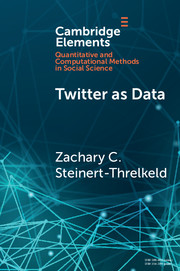Element contents
Twitter as Data
Published online by Cambridge University Press: 18 January 2018
Summary
Keywords
Information
- Type
- Element
- Information
- Online ISBN: 9781108529327Publisher: Cambridge University PressPrint publication: 18 January 2018
